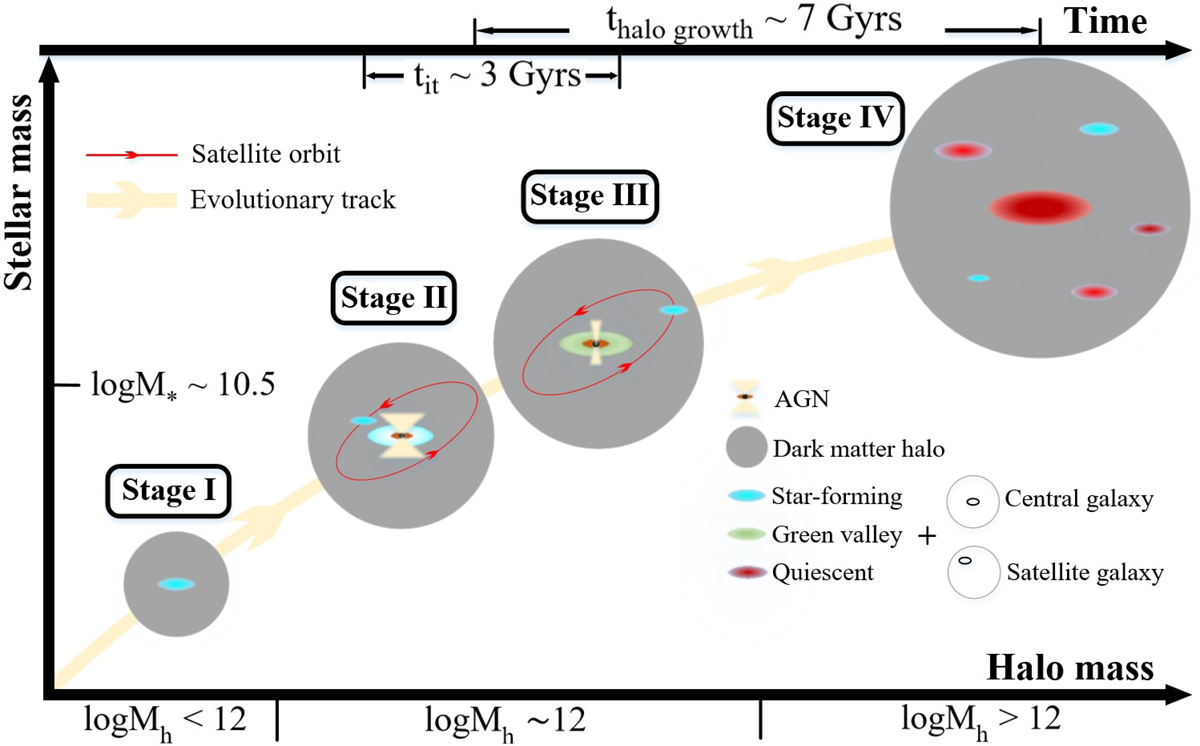Fig. 11.

Sketch of galaxy-halo evolution and AGN triggering through minor interactions. At stage I, when halo mass is much less than 1012 h−1 M⊙, the halo may only host one central galaxy which contains plenty of cold gas. No significant AGN activity is detected because of the absence of the minor interaction with satellites. At stage II, when the halo mass grows to ∼1012 h−1 M⊙, the number of satellites per halo reaches the order of unity so that interaction between central and satellites may happen within a timescale ∼3 Gyrs and, consequently, making the cold gas in the disk flow into the galaxy center, triggering AGN activity and strong star formation (or even a starburst). At stage III, star formation in a galaxy center has been quenched by a starburst and AGN activity and the stellar population formed in the starburst evolves from Dn4000 = 1 to 1.5. The non-axisymmetric structures produced by interaction may continue to drive cold gas inwards, albeit at a reduced rate, producing a low-level AGN multiple times. Since the amount of cold gas is reduced by the starburst, no significant enhancement of star formation is expected during this stage. At stage IV, after a typical timescale of 7 Gyrs, the host halo mass becomes much larger than 1012 h−1 M⊙, the star formation in central galaxy is fully quenched owning to the lack of cold gas, and an AGN may still be triggered by the secular process but too weak to detect.
Current usage metrics show cumulative count of Article Views (full-text article views including HTML views, PDF and ePub downloads, according to the available data) and Abstracts Views on Vision4Press platform.
Data correspond to usage on the plateform after 2015. The current usage metrics is available 48-96 hours after online publication and is updated daily on week days.
Initial download of the metrics may take a while.


